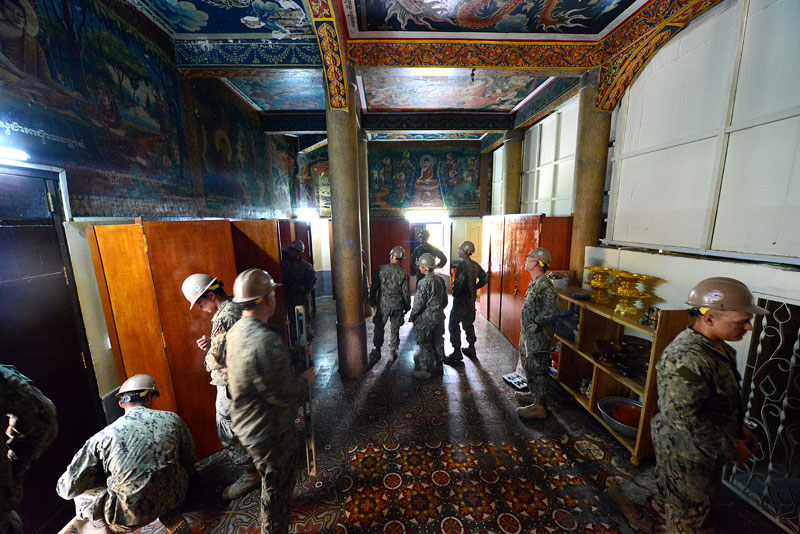During a visit to Wat Lanka last month, Youk Chhang, chief executive of the Documentation Center of Cambodia (DC-Cam), stumbled across more than 400 urns in an alcove behind a statue of Buddha, many of which are thought to predate the Pol Pot regime.
“One day when Youk’s sister passed and [there was] a celebration ceremony here and he came to this place and just learned by chance that a lot of urns are kept [here],” said Dara Vanthan, deputy director of DC-Cam.

“He’s the first person and this place is untouched by anyone, even the monks here and then he cleaned [them]…in the hope that their family members can come to get all these urns,” he said.
The majority of the bronze, clay, glass, stone, ceramic urns—some of which contain the ashes of children—are thought to have been left in the pagoda before Khmer Rouge forces emptied the capital, although some are believed to have been placed there later.
Mr. Vanthan said it was hoped that the upcoming publication of a book on the urns by DC-Cam will result in members of the public coming forward to claim their ancestors’ ashes, which he said hold the utmost importance to Cambodians.
“We plan to publish a book on the urns…and after the news spreads out people will contact us, and this is for the public,” Mr. Vanthan said.
“Urns are very important in the culture as it relates to the spirituality of ancestors…so the family want to see whether this urn belongs to their family,” he said.
On Friday, members of the U.S. Navy loaned their services to DC-Cam, building cabinets that will eventually house the urns and installing them in Wat Lanka.
Fabian Flores, a U.S. Navy builder who is currently stationed in Takeo province assisting with community construction projects, was part of the group of about 20 that constructed the five cabinets and delivered them to the pagoda on Sihanouk Boulevard.
“They brought us here and showed us what needed to be done, showed us the urns and how they were found and we found that very interesting…they were placed back before the Khmer Rouge…so for us to see these, we thought it would be a great project for us,” Mr. Flores said.